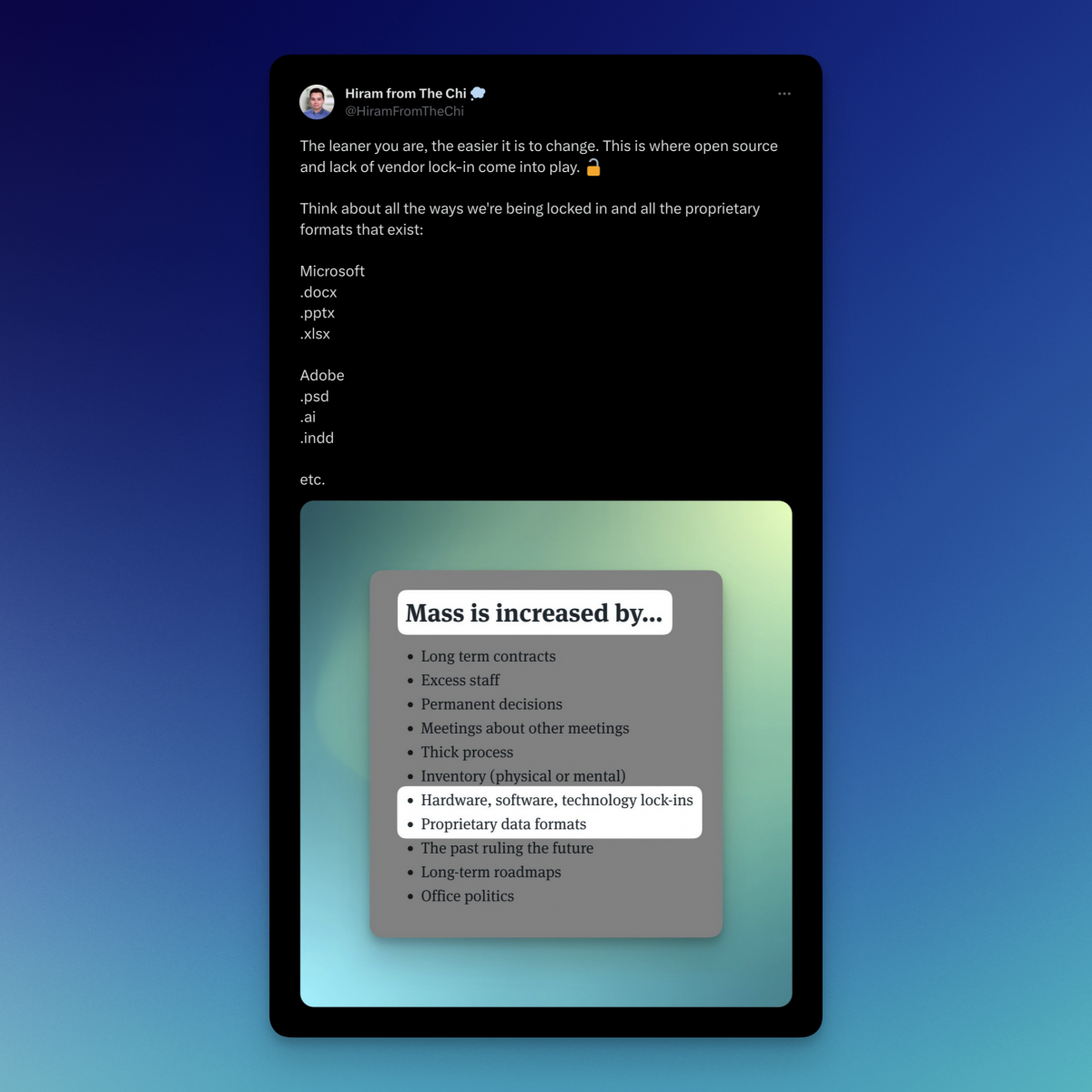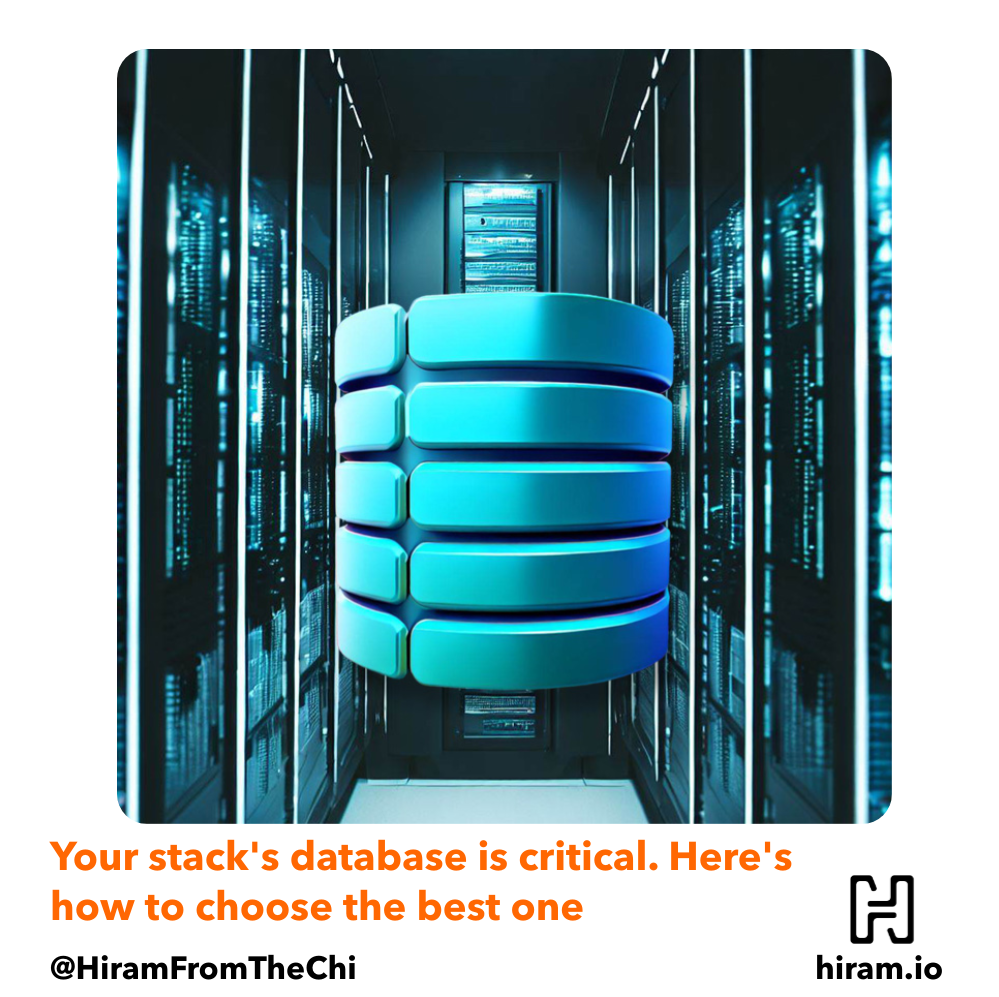"Should I build my app on [this tool], or [that tool]?"
Oftentimes (especially in the no-code space), makers jump right into thinking about the frontend—the design.
"This one app has a good interface!"
"This other app has prebuilt components that you can use!"
"You can build really complex designs with this one!"
There's nothing wrong with taking this into consideration, but it does pain me a bit to see a lack of discussion around the most important part of your stack: the database.
After all, everything requires a database. Your users need to be stored in a database. Your text messages are stored in a database. Emails are in a database. Information about your users, like when they last logged in—all stored in a database.
Everything is stored in a database.
Whatever the underlying reason is for glossing over this, the fact is that we shouldn't. In this post, we'll explore why the database is the most vital part of your tech stack, how it impacts your operations, and what to look out for when choosing a database.
What's a database?
A database serves as a central repository. It's responsible for not just storing, but also managing, vast amounts of data. It provides a structured environment where information can be securely stored, sorted, filtered, and retrieved. Whether it's customer details, financial records, or inventory data, a well-designed database ensures easy access, reliability, and data integrity.
Databases and spreadsheets are sometimes used interchangeably, but make no mistake—databases and spreadsheets are different.
Why you need a database
Let's say you run an online business called Tee Tweets that puts tweets on t-shirts, hoodies, and other tops. If you're designing t-shirts, it means you have inventory. Information about the inventory needs to be stored somewhere, like a database. Your inventory contains all sorts of data: shirt size, color, manufacturer, location, etc.
Then, think about your orders. Order data needs to be stored somewhere too, along with all the information that comes with placing an order. Things like: date, payment method, order number, status, and more.
That brings us to customers. All customers also have their own data as well—information like: name, email address, phone number, shipping address, and more.
Now think about all of the other components that you have to keep track of.
You could store your inventory in a spreadsheet, but a database would be better suited in this scenario. After all, your inventory, customers, and orders are all related.
With a database—more specifically, a relational database—you can create relations between different data types to store, manage, sort, filter, and retrieve the information that you need.
In the event of a sale, multiple things would happen simultaneously in a database: order details would come in, along with the customer details, and inventory levels would be adjusted based on the fulfillment (shipping and delivery) of that order.
Simply put: databases have everything to do with how businesses, applications, teams, and organizations run.
Qualities of a good database
Now that we've understood how imperative databases are, let's talk about the qualities of a good database and what to look out for when choosing one.
It's open source
Since the database is the core of your application, where everything gets stored, you should ensure that your database is secure. One of the ways you can make sure your database is secure is secure is by choosing an open source database, like Baserow.
Being open source doesn't automatically guarantee security, but it does give you the ability to verify—rather than trust—that your information is being properly secured.
Additionally, open source databases will allow you to self-host, which means that you're in control over where your data is stored. If you have strict data compliance requirements, self-hosting alleviates these concerns by letting you handle your infrastructure in the manner (and jurisdiction) of your choosing.
Safeguarding valuable information ensures compliance with data protection regulations, builds trust among customers, and mitigates the risk of data breaches that can lead to significant reputational and financial damage.
Having an open source database also means business continuity. If the company that owns the source code were to collapse, the source code remains available for you, someone else, or a community to keep developing and maintaining it.
It lets you create user role permissions
Security in the database's code is one thing, but managing users and user access within your database is another. There are many cases where it makes sense to share only a specific portion of data with a team or individual. A robust database implements industry-standard security measures, such as access controls, snapshots, and audit trails.
Choosing a database that allows you to manage users with various roles and permissions is an important step in creating and maintaining healthy data security processes.
It has open integrations and automations
A robust database seamlessly integrates with other components of your tech stack, enabling smooth interoperability. It acts as a bridge that allows different systems, such as web applications and APIs, to communicate and share data effortlessly. This integration facilitates real-time updates, collaborative workflows, and data synchronization across multiple platforms.
Even though many databases offer native integrations, using any database that's closed source means that you're at the mercy of the developer to build those integrations (which may never get built).
With an open API, you can build integrations and automations yourself, or even hire someone to do it for you.
It allows you to centralize your information
The point of a database is to have a single source of truth. If you've ever worked on a team that uses spreadsheets, you understand the confusion and pain that comes from passing around spreadsheets with different versions and modifications made by multiple team members.
A good database helps you organize vast amounts of data in a single place. No more confusion, frustration, or versioning as you might encounter with spreadsheets.
It makes your data portable and eliminates vendor lock-in
Let's face it—humans don't like change. And the larger you are, the harder it is to change. That's why organizations, and even individuals, have a hard time switching from one software to another.

It's even harder to make the switch when the software is bundled with proprietary formats that make switching a huge pain.
Look for databases that allow you to export your data in an open fashion to reduce switching costs.
It's performant at scale
The efficiency of your tech stack heavily relies on the database's performance and scalability. A properly optimized database minimizes response times, reduces downtime, and enhances the user experience.
Even if you're small now, as your business grows, the database must handle increasing workloads without compromising efficiency. With advanced technologies, you can scale your database to accommodate surges in demand, ensuring uninterrupted service and seamless growth.
Summary
While every component of your tech stack plays a crucial role, it's the database that serves as the backbone of your operations. From data management and seamless integration to performance and scalability, every aspect of your technology relies on a well-designed open source database. With data being at the core of our world, individuals and organizations must prioritize building a robust, open database infrastructure that facilitates efficient operations, informed decision-making, and secure data management.
The database is not just an essential part of your tech stack; it's the foundation that sets you up for success.
- Web: hiram.io
- Rising Tide (blog): hiram.io/blog
- LinkedIn: @hiramfromthechi
- Twitter/X: @hiramfromthechi
- Medium: @hiramfromthechi
- Mastodon: @hiramfromthechi@mastodon.social

